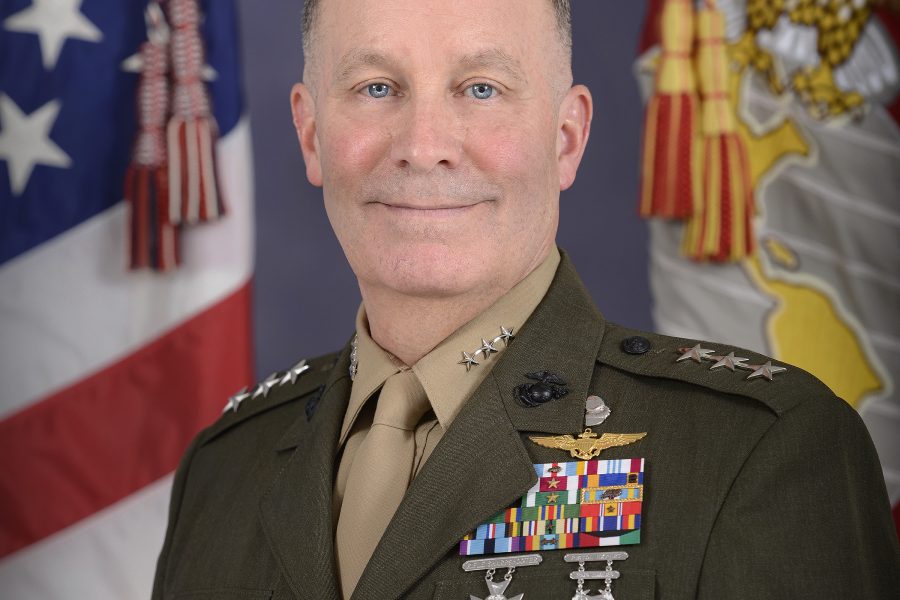President Trump has nominated Marine Corps Lt. Gen. Gregory L. Masiello to lead the F-35 Joint Strike Fighter program, the Pentagon announced June 20. If confirmed by the Senate, he would succeed Air Force Lt. Gen. Michael Schmidt, who has led the program since 2022.
Masiello, who now heads the Defense Contract Management Agency (DCMA), is a former enlisted Marine and a naval aviator who flew the UH-1N and VH-3 presidential transports, and spent time as the V-22 Joint Program Manager. From 2013-2014 he was the senior military deputy to Frank Kendall, who at the time was undersecretary of defense for acquisition, technology and logistics. He then moved on to become the F-35 Joint Program Director for Follow-On development. Before taking charge at DCMA he was program executive officer for the Navy’s airborne anti-submarine warfare programs.
DCMA is responsible for contract complince and manages testing and acceptance, roles that involve oversight of F-35’s manufacturer, Lockheed Martin, and its engine provider, Pratt & Whitney.
Under the Joint Strike Fighter program’s structure, which alternates roles for the Department of the Navy and Department of the Air Force, the JPO will now report to the Air Force acquisition executive. In the past, the deputy program manager was also of the same service as the service acquisition executive, but that practice was abandoned several years ago, in favor of a civilian in that position.
Masiello would be the first naval officer to lead the program in several years. Schmidt was the second consecutive USAF officer to run the JPO, succeeding Lt. Gen. Eric Fick. That was the first time in the program’s history when officers from the same service followed each other in the position.
During Schmidt’s tenure, the F-35 program wrestled with the transition from the basic fighter to the initial stages of the Block 4 upgraded version. He presided over the start of the engine core upgrade program—chosen after lengthy debate about using new adaptive engines—and the Tech Refresh 3, which is the hardware and software basis for the 80 or so improvements that will come with Block 4. He also negotiated the Lot 18 and 19 contracts—not yet definitized—and managed the program through a yearlong hold on deliveries as Lockheed Martin and the test enterprise labored to clear the TR-3.
